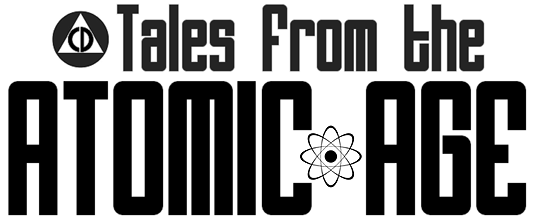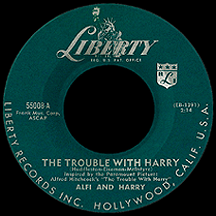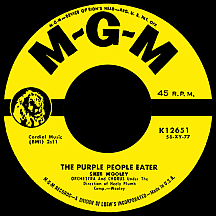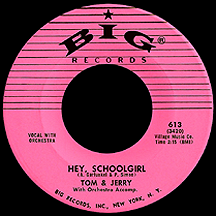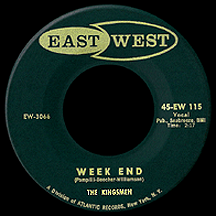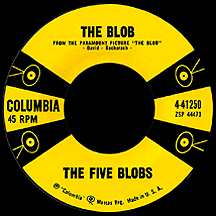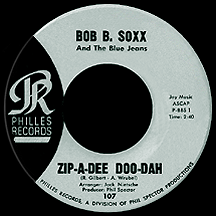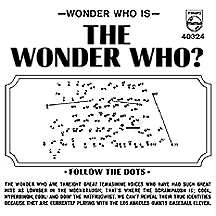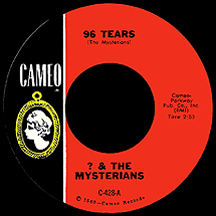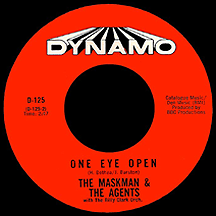Incognito Acts:
They're Not Fooling Anyone!?
Have you ever wondered who those guys that call themselves The Guess Who really were? Probably not, because you already know about this extremely popular band led by Burton Cummings and Randy Bachman. But once upon a time they were among many artists of the '50s and '60s trying to pull the wool over our eyes! It was a musical bait-and-switch carrying no intent of malice, usually just a promotional gimmick or an attempt for an artist to branch out and reach a new audience. Other times it was just for fun, something to break routine. Incognito acts! The double and sometimes triple lives of singers and musicians.
What follows are some of the more notorious examples of artists who used aliases with varied results. An early example is Roy Byrd, a New Orleans street musician since the 1930s known by his own name and later by the nickname Professor Longhair. In 1950 he was signed to Mercury Records and scored an R&B hit, as Byrd, "Bald Head." At about the same time he was approached by Atlantic Records, so he did some moonlighting with them under the Longhair name, making a number of influential rhythm and blues recordings including "Tipitina," which was later the name of a club opened in New Orleans in 1977, where he performed until his death in 1980.
Country superstar Hank Williams, popular since 1947, began recording inspirational music in 1950 as Luke the Drifter, wishing to keep those recordings separate from his successful country career. Other country artists had a more whimsical reason for going incognito: Sheb Wooley, a fairly humorous guy in his own right with hits like "The Purple People Eater" in 1958 and "That's My Pa" four years later, went off the deep end as Ben Colder, recording parodies like "Don't Go Near the Eskimos" and Harper Valley P.T.A. (Later That Same Day)" as a raging drunk, a persona he reenacted on the CBS series Hee Haw and other shows for years after. Ferlin Husky, one of country's biggest stars of the '50s and early '60s, with hits including "Gone" and "Wings of a Dove," offered his own comedy shenaningans as Simon Crum, mostly notably with "Country Music is Here to Stay" in 1958.
Ross Bagdasarian, a songwriter with a number one hit to his credit (Rosemary Clooney's "Come On-a My House" in 1951), also had minor parts in several films, including Alfred Hitchcock's 1954 classic Rear Window. Hitchcock's follow-up feature in '55 was inspiration for a novelty single with the same title as the movie: "The Trouble With Harry" was released by Bagdasarian as Alfi and Harry, a tribute to the director and the title character (played by Philip Truex as a corpse throughout the entire film). Soon after Bagdasarian achieved pop culture immortality as David Seville, using a tape-speed trick to create the voice of "The Witch Doctor," landing a number one hit in 1958, then taking the gimmick to the nth degree later that year with The Chipmunks. Their many hit songs, TV cartoons and movies remain popular today.
The definitive example of an incognito artist in films (in this case an unsung singer!) is Marni Nixon. In 1949 she supplied the singing voice for Margaret O'Brien in The Secret Garden, and later dubbed the singing in three of the most successful musical films of all time, which the stars lip-synched: Deborah Kerr in The King and I, Natalie Wood in West Side Story and Audrey Hepburn in My Fair Lady.
A number of rock and roll acts used aliases in the late 1950s, the most famous being Buddy Holly. He and his band released singles under Holly's name on the Coral and Decca labels in addition to group name The Crickets on Brunswick, with his name only listed on the labels under songwriter credits...but Buddy wasn't fooling anyone! His records were hits regardless. Bobby Darin followed suit (with "Early in the Morning," a song also released by Holly) as The Ding-Dongs on Brunswick in an attempt to score a hit outside his contract with Atco Records. When Atco found out, they reissued the record under the name The Rinky-Dinks. Simon and Garfunkel had a different reason for putting out "Hey, Schoolgirl" as Tom and Jerry: they didn't think they would ever make it using their own names.
Several rock artists moonlighted under aliases as instrumental acts: The Comets (without Bill Haley) hit the charts in 1958 with "Week End" as The Kingsmen (predating the Pacific Northwest band of the same name by several years), Ritchie Valens became Arvee Allens (an acronymic jumble of his initals and surname) with the single "Fast Freight," Johnny and Dorsey Burnette became The Texans for a couple of nonvocal 45s including "Green Grass of Texas," and Don Everly of The Everly Brothers recorded "Pomp and Circumstance," the famous "Graduation Song," a top 40 hit at the end of the 1961 school year, using the unlikely pseudonym Adrian Kimberly. Later, Stevie Wonder employed a seldom-used trick, spelling his name backwards and hitting the charts as Eivets Rednow with a harmonica-solo instrumental version of "Alfie."
Quite a few R&B acts got in on the deception: in the early 1950s, after performing and recording for more than 15 years, Piano Red hit big with several R&B hits, including "Rockin' With Red" and "Red's Boogie" for RCA Victor, then around 1961 renamed his act Dr. Feelgood and the Interns, hitting with "Doctor Feel-Good" and "Right String But the Wrong Yo-Yo" on the Okeh label, along with "Mr. Moonlight," later recorded by The Beatles. The Jayhawks (known for the 1956 hit "Stranded in the Jungle"), with minor personnel changes, became The Vibrations ("The Watusi," "My Girl Sloopy") and also moonlighted in 1962 as The Marathons ("Peanut Butter"). In 1959, Atlantic Records, feeling there was still commercial potential for one of the label's most successful but recently-disbanded groups, The Drifters, recruited The Five Crowns (which included lead singer Ben E. King) and promoted them under the already established name. These new Drifters followed with many great hits. Occasionally a mistake by a record label would lead to an unintentional incognito act, one case being The Starlets, who scored a top 40 hit in 1961 with "Better Tell Him No." The girl group also recorded "I Sold My Heart to the Junkman" (an even bigger hit) but were denied credit when the label listed a different group, The Blue-Belles (whose lead singer, Patti LaBelle, enjoyed many years of continued success).
One of my favorite examples of an alias act is Bernie Nee, a session singer who recorded the theme from the 1958 sci-fi/horror film "The Blob" as The Five Blobs, his voice overdubbed to simulate a group sound. This bizarre but lighthearted tune (a contrast to the now-cult film's more intense and gooey subject matter) was an early hit for writer Burt Bacharach (collaborating with Mack David) and the film itself was the first starring feature film role in the successful career of Steve McQueen. Nee released two more singles using the Five Blobs alias, but this project was clearly destined to be a one-shot.
At its peak in 1962 and 1963, Phil Spector's Philles label was a chaotic operation, with the hits coming fast and furious at about one per month, an impressive output for a small record company. Spector's hot group on early Philles releases was The Crystals, but as they were performing on the road, thus unavailable on short notice, he used prolific and available session group The Blossoms, featuring lead singer Darlene Love, on the sessions for two big hits: "He's a Rebel," a number one smash in late 1962, and its follow-up, "He's Sure the Boy I Love" (the actual Crystals, with lead singer La La Brooks, later had to lip-sync to the Blossoms' recording of "Rebel" on television appearances). Spector also recorded Darlene in a slightly different lineup, calling them Bob B. Soxx and the Blue Jeans ("Zip-A-Dee Doo-Dah" was their hit) and finally as a solo act. Cher, who'd been hanging around Gold Star studios where the Philles "Wall of Sound" hits were made, got her chance at recording a single in 1964 with "Ringo, I Love You," which Spector released under the name Bonnie Jo Mason. The inevitable moment when she would forever be known by her first name had one more detour when she hooked up with Sonny Bono: the duo's first recordings used the alias Caesar and Cleo before they finally hit the big time as Sonny and Cher.
The mid-'60s brought us so many "who" acts that you may find yourself asking "Why?" The "You Know Who" Group is one of the most mysterious of incognito acts, wearing Lone Ranger-style masks onstage and purporting to be another hot British Invasion act in 1964, complete with British accents on "(Roses Are Red) My Love." Little is known about them except that they were recorded in New York by producer Bob Gallo and are probably not from the United Kingdom. Three more "who" groups appeared within the next 12 months, starting with The Who, and these guys really were fom the U.K., but became international superstars and any initial confusion was soon cleared up. The next "who" band came out of Winnipeg, Canada: Guess Who? appeared in the spring of '65 with "Shakin' All Over" and most U.S. listeners couldn't have attempted a guess, though in Canada the group was already established as Chad Allan and the Expressions (can't help wondering if all these like-named groups led to The Kinks blowing off steam with a hidden meaning to their 1965 hit "Who'll Be the Next in Line"). Obviously not concerned about name repetition, The Wonder Who? came along at the end of the year with a painfully high falsetto version of Bob Dylan's "Don't Think Twice" (a hit two years earlier by Peter, Paul and Mary as "Don't Think Twice, It's All Right"). Turns out it was incognito veterans The 4 Seasons (previously The Four Lovers and other names before their massive Seasons success). Goofing around in the studio, lead singer Frankie Valli hit higher notes than ever, falling just short of dog-whistle range. Not meant for release, the group's label, Philips, put it out anyway and it was a hit, falling just shy of the top ten; a few more Wonder Who records came out over the next two years.
Jerry Samuels was a singer-songwriter most noted for composing Sammy Davis Jr.'s 1964 hit "The Shelter of Your Arms." He went off his rocker in the summer of 1966 with "They're Coming to Take Me Away, Ha-Haaa!" as Napoleon XIV and the insanity act paid off well enough to cover his asylum bills; it was a million seller. Jumping on the incognito bandwagon, a group called The Unknowns released a single in '66, "Melody for an Unknown Girl," a cover of a track from the Paul Revere and the Raiders album Midnight Ride. The Unknowns were actually a supergroup of sorts, a collaboration between Steve Alaimo with Raiders lead singer Mark Lindsay and later Raider Keith Allison.
Of the many mid-'60s incognito acts, the "You Know Who" Group didn't actually have an alter ego. There were others that didn't either, opting instead to create an aura of mystery in the hopes the public would buy into it. A Saginaw, Michigan band managed to top the charts with the ploy: ? and the Mysterians released "96 Tears" under a cloak of secrecy as to just who "Question Mark" really was, though it was soon revealed he was Rudy Martinez, amounting to a total fake-out...Martinez wasn't well known and we were all duped again. You-know-who guy Bob Gallo's involvement with the Mysterians records demonstrated his belief in the incognito concept. A similar hoax was attempted in 1969 by The Maskman and the Agents ("One Eye Open"), whose lead singer, Harmon Bethea, wore a large "masquerade ball" mask while performing.
In an unusual move, the 1969 hit "Mah-Na-Mah-Na" was released without an artist credit; the label simply indicated it was from the movie Sweden Heaven and Hell, an X-rated documentary film. Italian film composer Piero Umiliani, who wrote the song, was the actual artist, and the singer doing the nose-pinching vocals was Alessandro Alessandroni. The song has had a lot of TV exposure over the years, on The Red Skelton Show, The Muppet Show, Sesame Street and The Benny Hill Show among others.
In 1968 and '69, three artists with previous hits reappeared using new names: Johnny Cymbal (1963's "Mr. Bass Man") scored big as Derek with "Cinnamon," British star Marty Wilde (who hit with "Bad Boy" in 1960) alter-egoed as Shannon with "Abergavenny" and Tony Orlando, working as a session singer, had the hit "Make Believe" under the name Wind (later he would emerge as part of Dawn, riding high on the charts for several years in the '70s). And this brings us back to the "Shakin' All Over" band The Guess Who, who had gone through some personnel changes by 1969, added Burton Cummings as lead singer, dropped the question mark from their name and no longer made anyone wonder about anything, as "These Eyes" kicked the group off on a steady string of hits.


